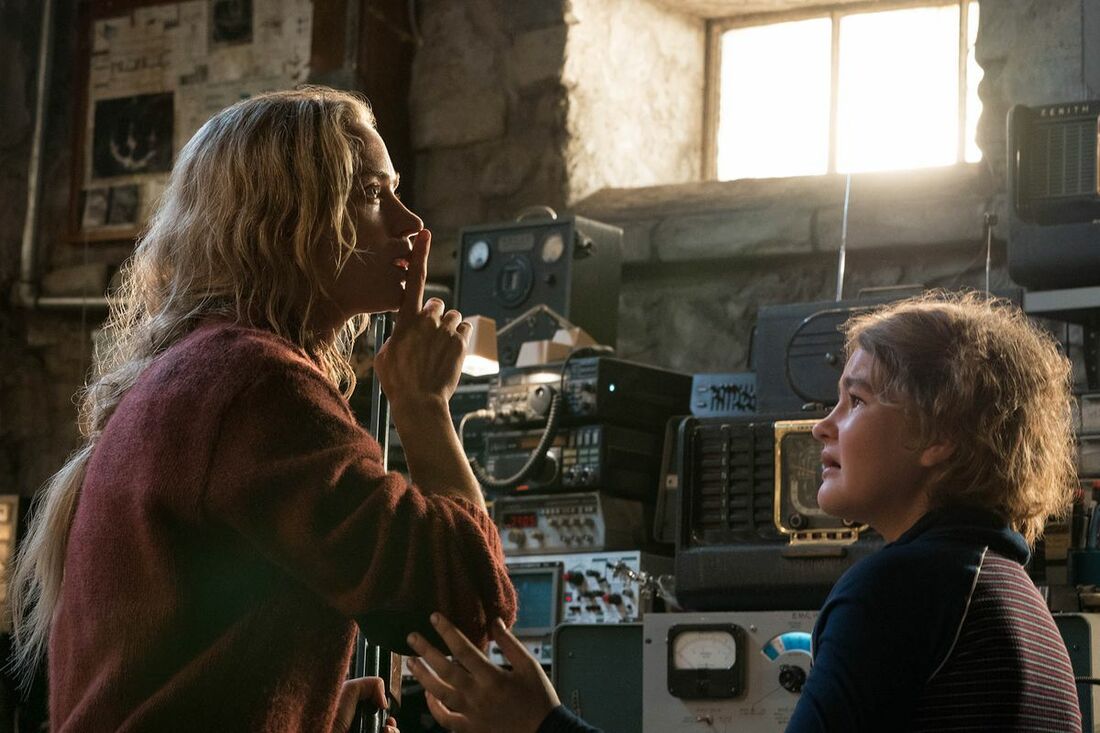Formerly the director of an experimental David Foster Wallace adaptation and a stereotypical indie drama, Krasinski is a surprising choice to helm a horror film. In response to this new challenge, Krasinski has put a great deal of thought into his film. A Quiet Place is something of a stakes homer in that the rules of the world make every step a possible fatal error if a twig gets broken or a floorboard creaks, but again, Krasinski has thought ahead. For the characters to have survived this long, they have to be smart, and they’ve considered where the creaky floorboards are, marking them accordingly. Evelyn is heavily pregnant at the start of the film, and it’s no spoiler to say that a pregnant character in a film eventually goes into labor, and the film has the mechanics and noise of this covered, too. The most common knock on horror movies is how stupidly the characters act in response to mortal danger, and solving this particular trope is A Quiet Place’s greatest asset.
The best horror directors understand that serving its characters up as grist for the mill is not an admirable trait in audiences, and they push back by stocking their films with real people who have greater value than an inventive splatter of gore. A Quiet Place is no exception. The film builds moments of true humanity for the Abbotts. One of the first glimpses of the Abbott children is of them doodling on a supermarket floor, actions that immediately mark the parents as the raisers of happy kids despite the threat they live under. As the film reaches its long climax, the viewer has spent a lot of low-stakes, or at least as low-stakes as things can get when a cough might lead to one’s death, time with the Abbotts, cementing their specific relationships with each other before the relentless push of the finale.
In that slow burn, Krasinski finds moments for his cast to strut their skills. The film functions as a kind of acting exercise, as each actor is forced to react solely to facial contortions and body language. For Simmonds, so excellent in 2017’s Wonderstruck, this is how she’s lived her life, and she brings a baseline of expressiveness that is matched by her castmates. Middle son Marcus, played by Noah Jupe and embodied by the puffball on his stocking hat, is a justifiably anxious kid who shares some affecting scenes with Krasinski. Krasinski obviously has chemistry with Blunt, and vice versa. The latter, thanks to the pregnancy, is asked to give the biggest physical performance, while the former radiates a subtle competence mixed with dread for his family despite all their precautions. The performances convey a loving portrait in the midst of a survival horror flick.
The rating marks A Quiet Place as the rare horror film that could function as a family outing. So much PG-13 horror is intolerable jump scares churned out at a high clip in films that themselves seem to be factory-made, but Krasinski harkens back to 80’s blockbusters with his satisfying directorial breakthrough. This is a film that is hard to imagine disliking, a well-made outing that’s also propulsive and empowering and emotionally mature. The sequel heralded by the final frames immediately calls for a bigger scope and budget, but A Quiet Place is strong just the way it is. B+

 RSS Feed
RSS Feed